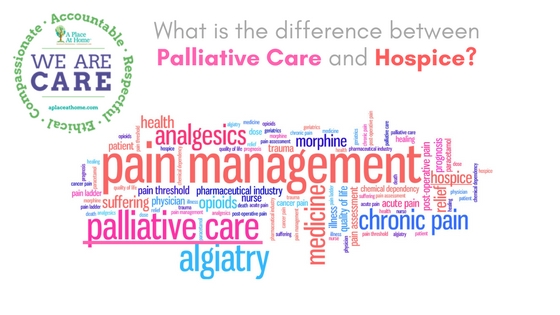
We’re fortunate to live in a time when we have several late-in-life care options. In home care services can help our loved ones maintain their independence and remain in their homes longer. For many families, as their loved ones reach the end of their lives, they are faced with a difficult choice between hospice care or palliative care.
Hospice care and palliative care are similar when it comes to the most important issue for people in the end stage of life, they both provide compassionate care.
Let’s explore these two options in order to help you to make the best choice for your loved ones at this difficult and emotional time.
Hospice Care
Hospice programs outnumber palliative care programs. Enrollment in a hospice program begins with a referral from the patient’s primary care doctor, and care is typically administered as a component of in home care services. Care is overseen by a hospice professional, and is provided in the patient’s home. Day-to-day, both the family caregiver and a visiting hospice nurse provide treatment. While hospice can provide around-the-clock care in a nursing home, a hospice facility, or occasionally in a hospital, it is typically provided as in home care services.
Palliative Care
Palliative teams consist of doctors, nurses and other medical professionals often provided at the facility or hospital where your loved one will first receive treatment. This team administers the care that ongoing comfort-care patients will receive. Palliative care can be administered in the patient’s home, but it is typically provided in a palliative care facility like a hospital, nursing home, or extended care facility where the team practices.
Other Considerations…
- To be eligible for hospice care, your loved one’s condition must be terminal, or they must be within 6 months of death. There are no time restrictions with palliative care, whether terminally ill or not.
- Hospice programs focus on the comfort of the patient rather than aggressive treatment. Because there are no time limits for palliative care, patients can receive comfort and treatment at any stage of disease, whether terminal or chronic.
Costs and the services provided can vary, so you should consult your insurance before making a final decision. Both hospice and palliative care can make your loved ones comfortable at the end of their lives. The final decision rests on the needs of both the patient and their family.






